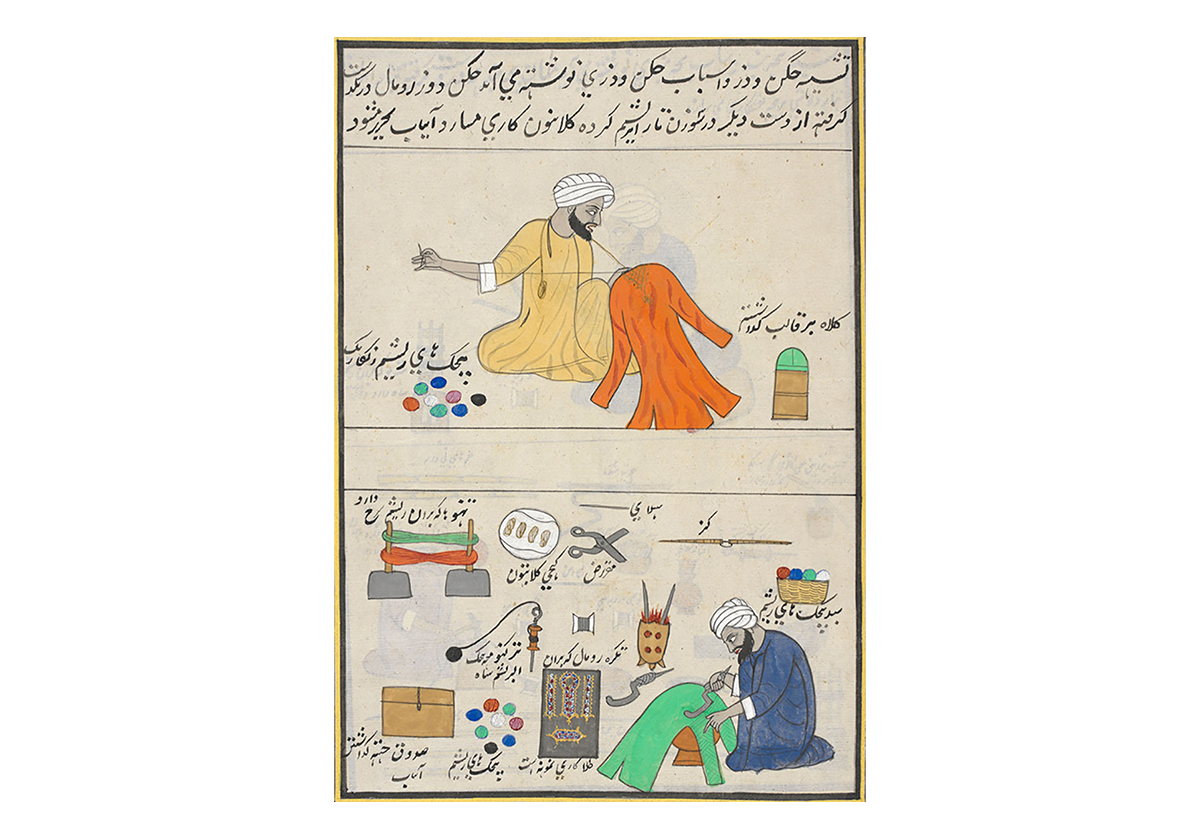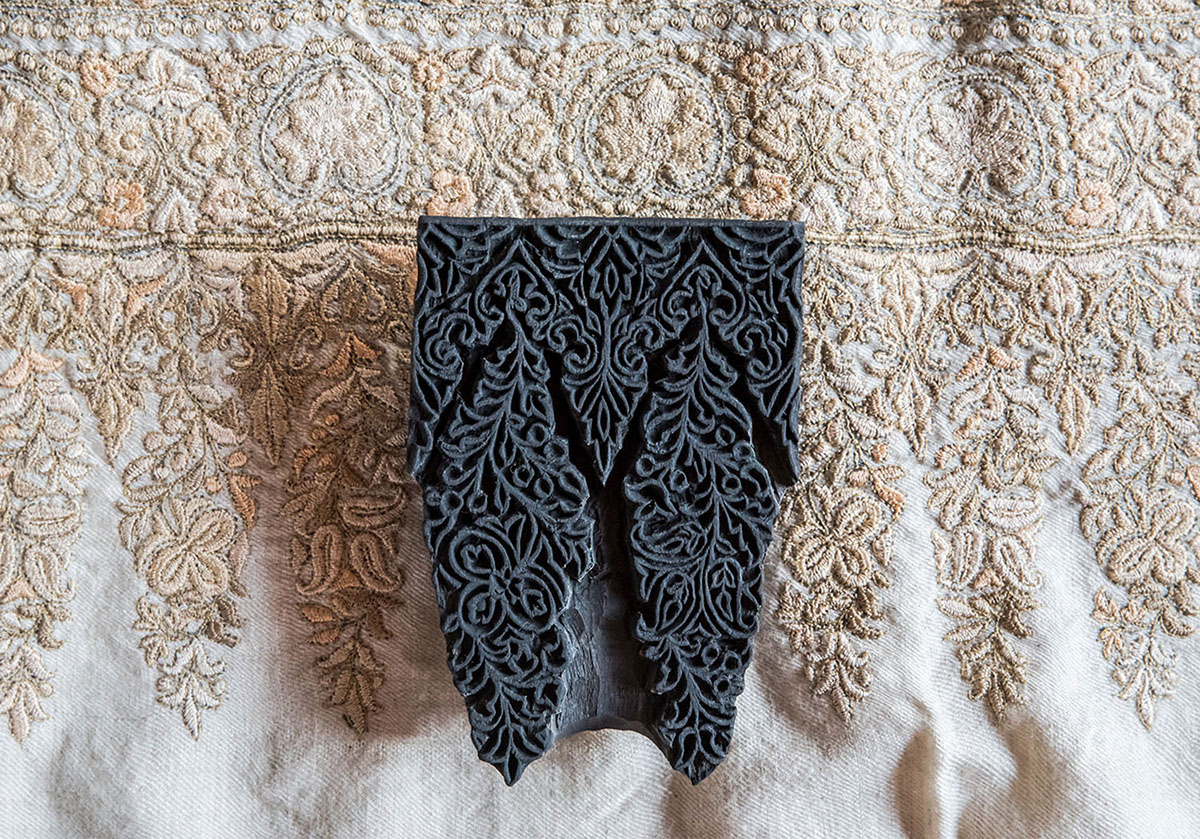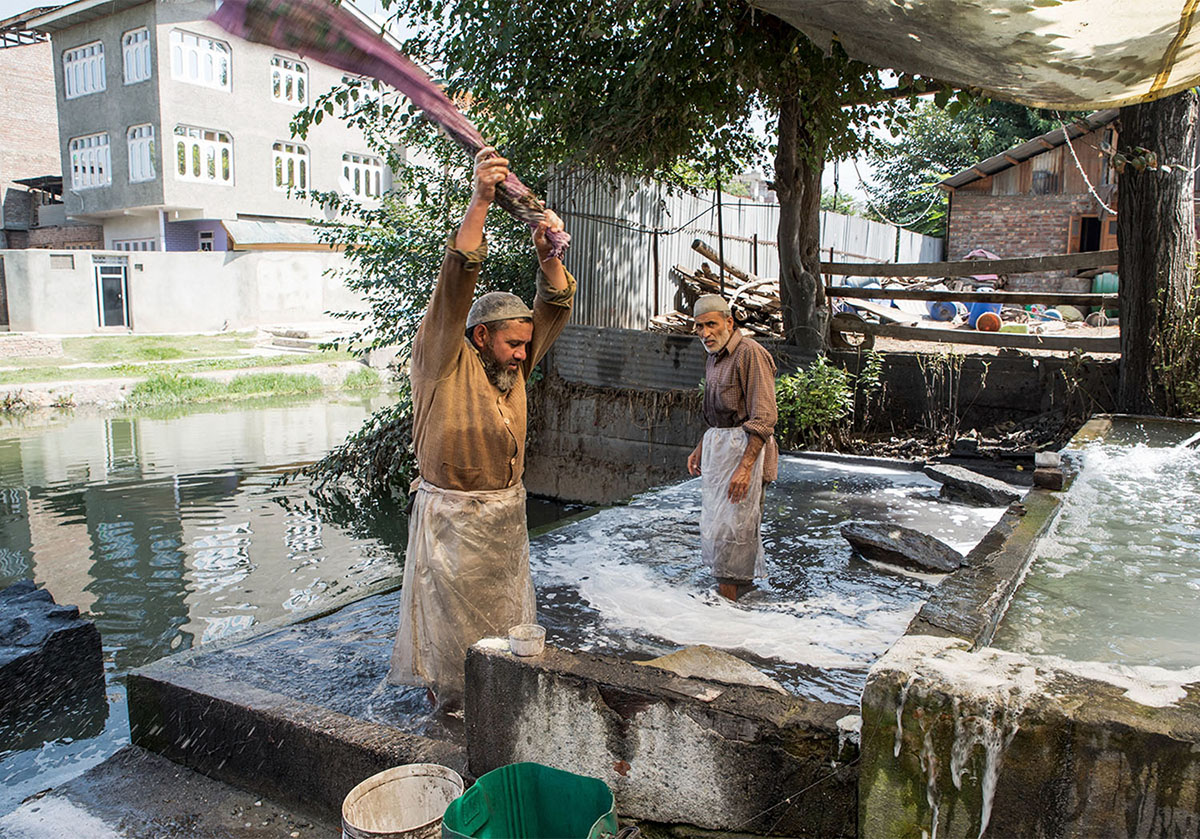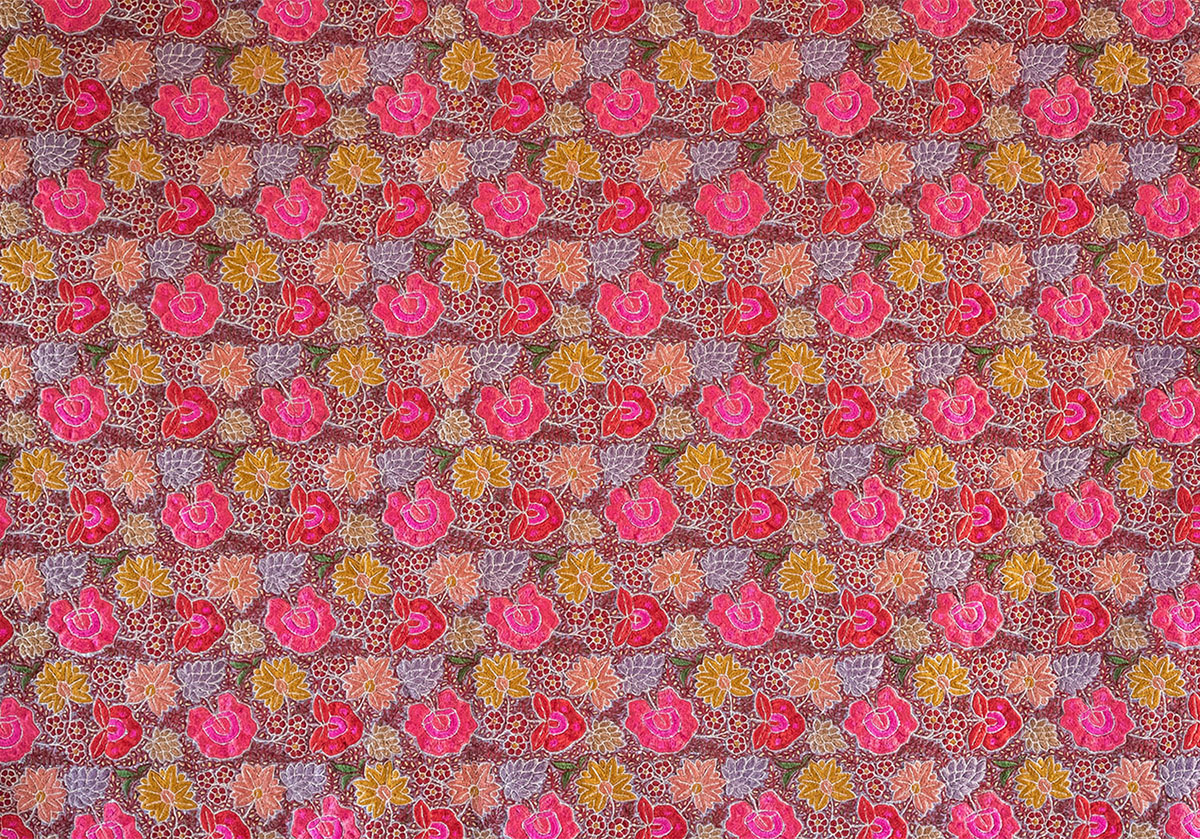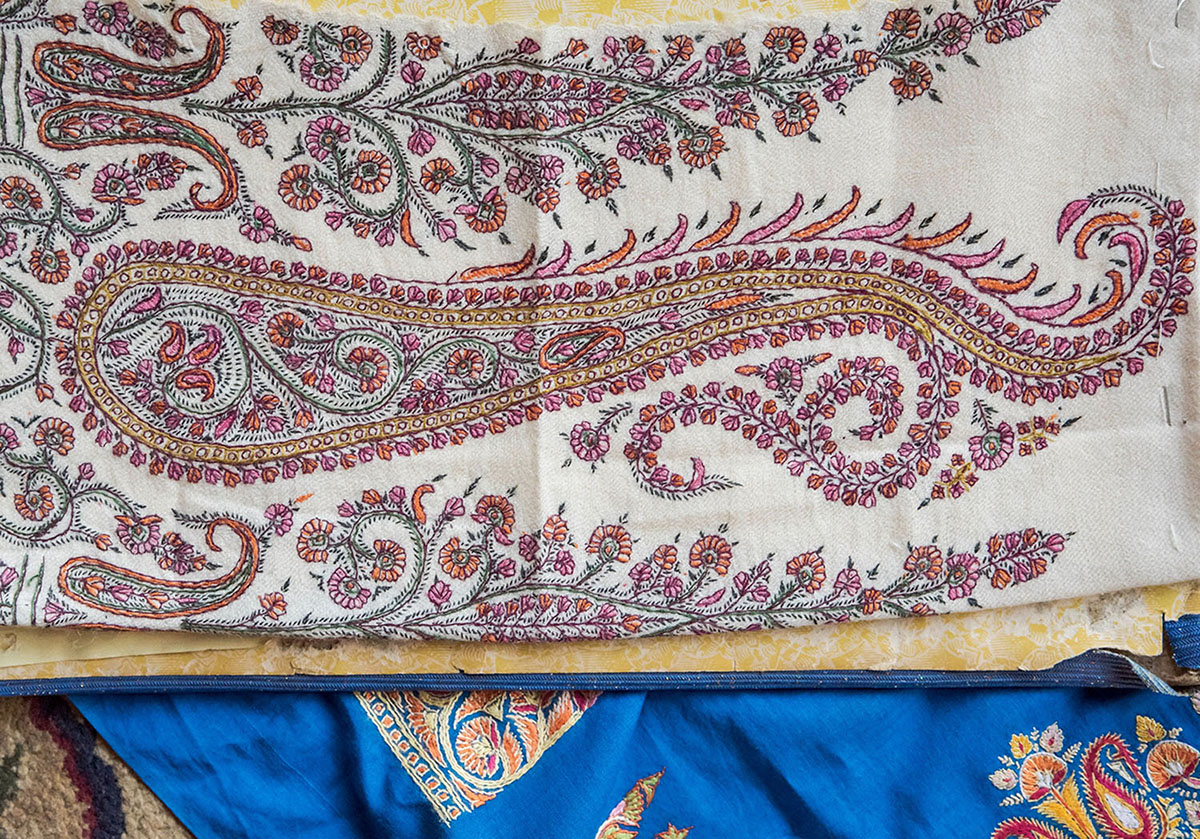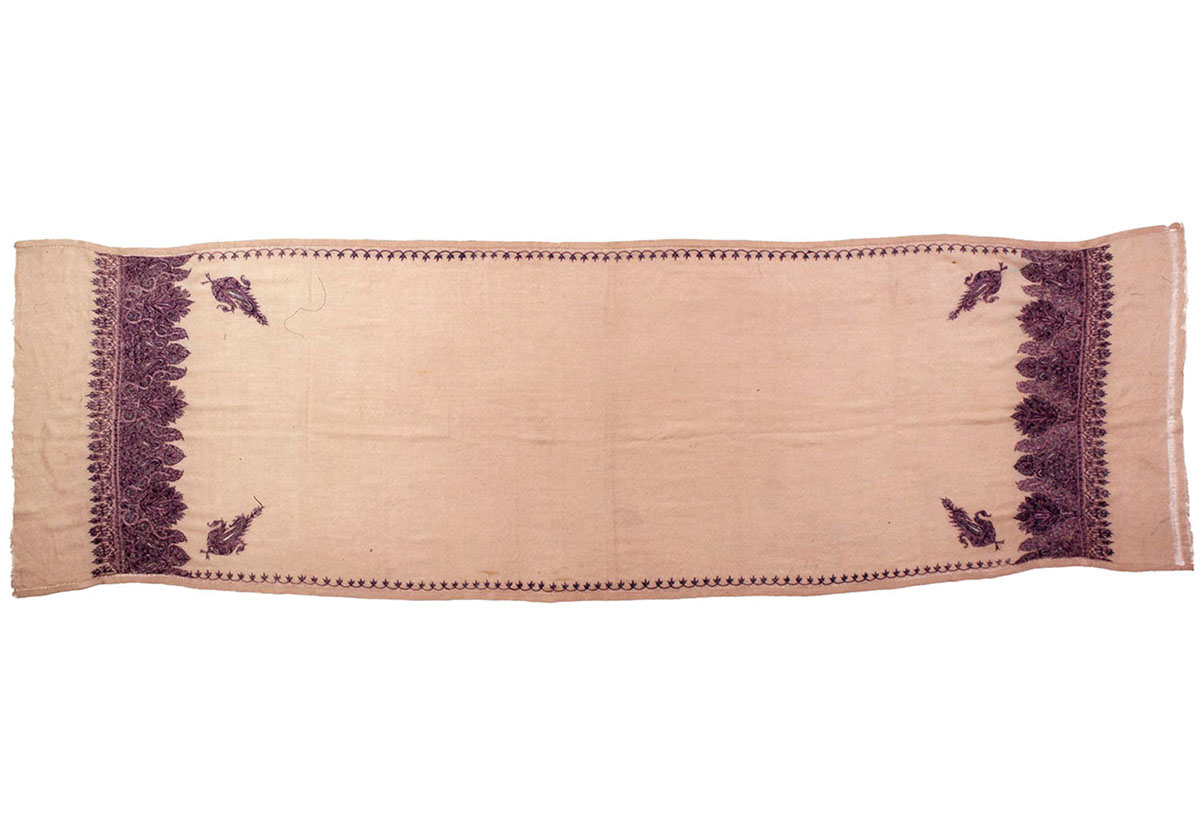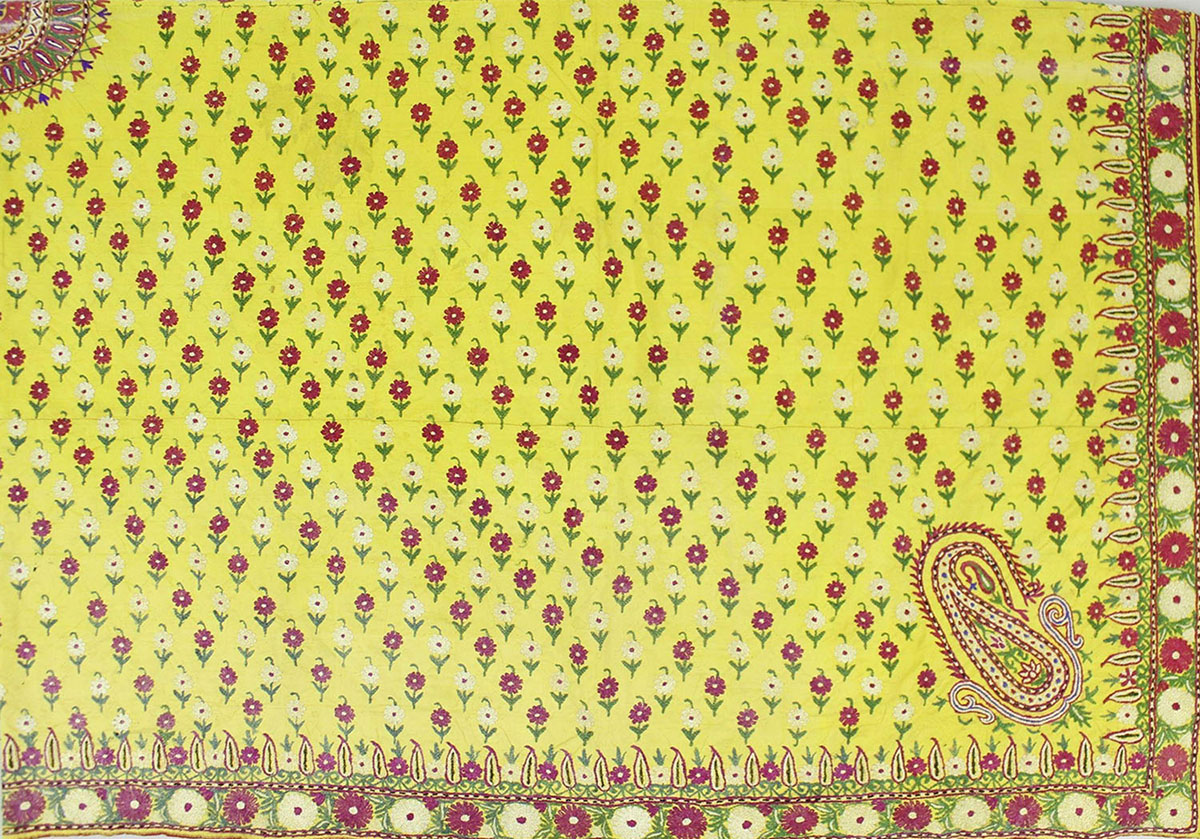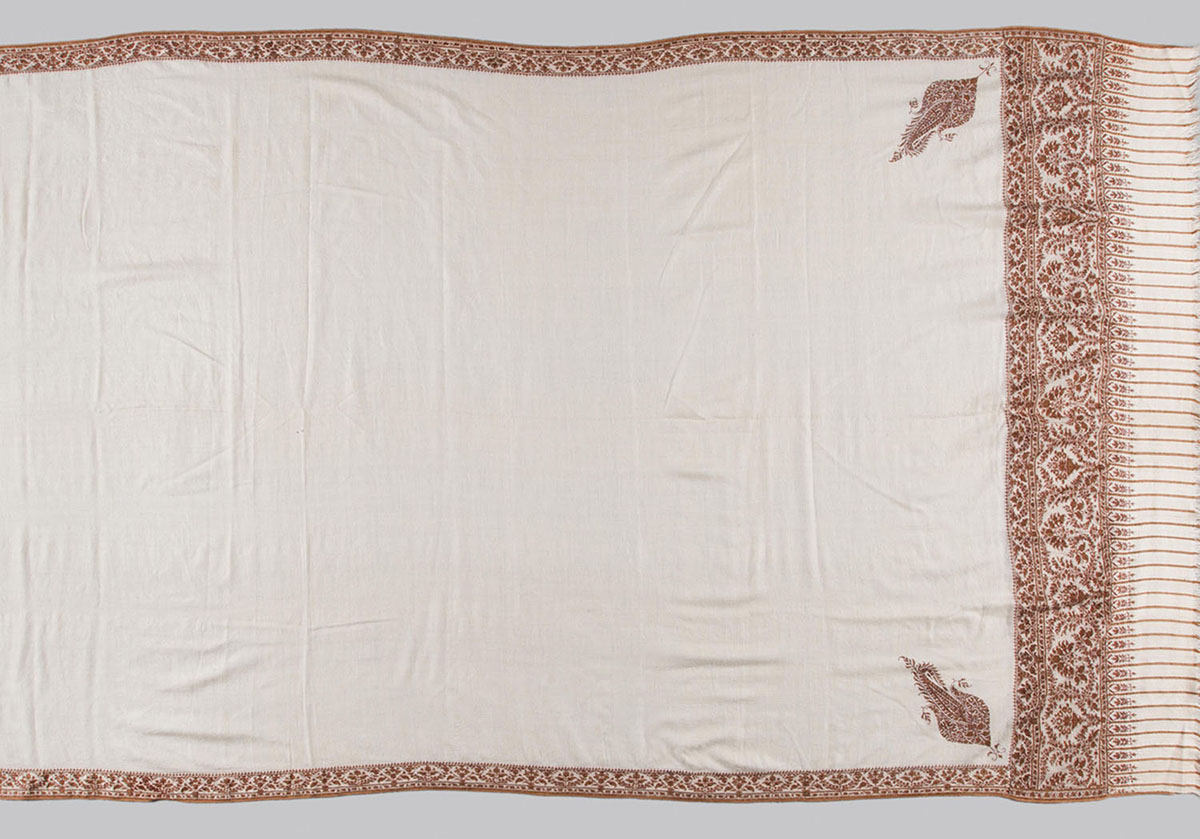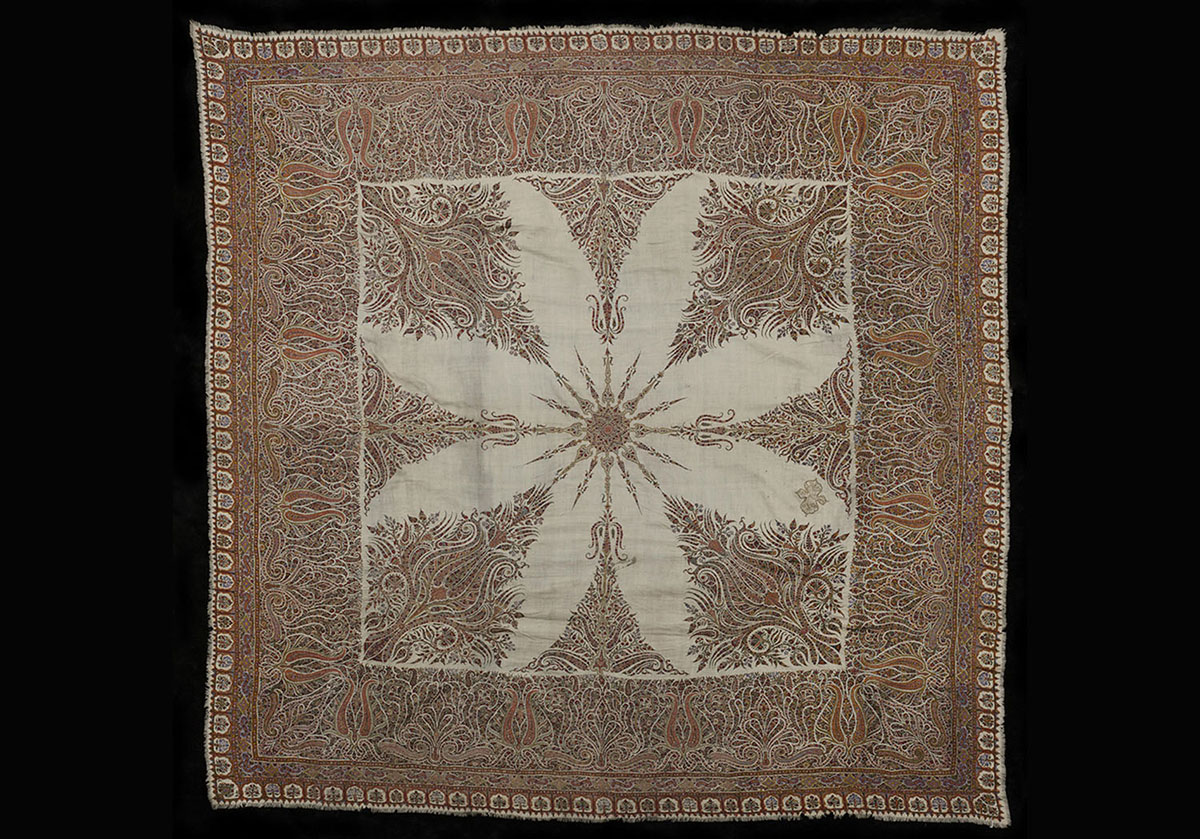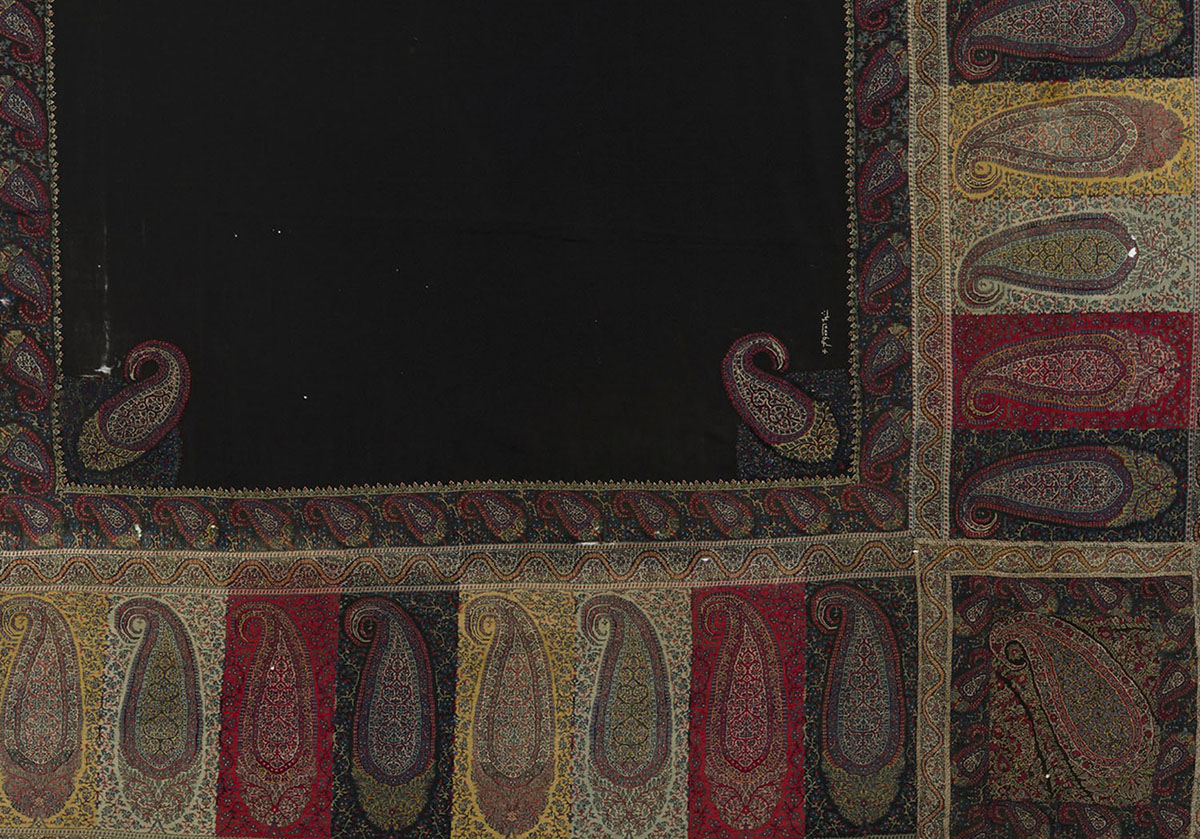ARTICLE
Sozni Embroidery
An embroidery style from Kashmir, sozni or suzani needlework designs are usually used to embellish kani weave pashmina shawls, and have been luxury handloom items since the Mughal rule in South Asia. The embroidery is characterised by geometric patterns, floral motifs and variations of buta, such as paisley and kairi.
Sozni embroidery is intricate and time-consuming — in rare cases, a single shawl takes years to be embroidered. The key feature of the embroidery is the dorukha method of stitching: after stamping the planned pattern on the shawl using carved walnut wood blocks, a type of stem stitch is used to wrap each warp yarn with a coloured thread. Usually, two or three colours are used in sozni designs, with the main design rendered in a single continuous thread. The resultant pattern is layered, dense and visible on both sides of the shawl. After the embroidery is completed, the shawl is washed, dried and pressed using large rotating cylinders in order to even out the surface. The embroidery is practised mainly by men in household workshops with some assistance from the women of the family.
While shawls with sozni embroidery continue to be regarded as luxury items, the number of kani weavers and sozni embroiderers has reduced over the last few decades. The lack of mechanisation in the craft adds further social and financial pressure on existing artisans. Today, the craft continues to be supported by non-profit organisations such as Dastkari Haat Samiti, especially to aid with documentation and spreading public awareness.
Bibliography
Our website is currently undergoing maintenance and re-design, due to which we have had to take down some of our bibliographies. While these will be re-published shortly, you can request references for specific articles by writing to hellomapacademy@map-india.org.




